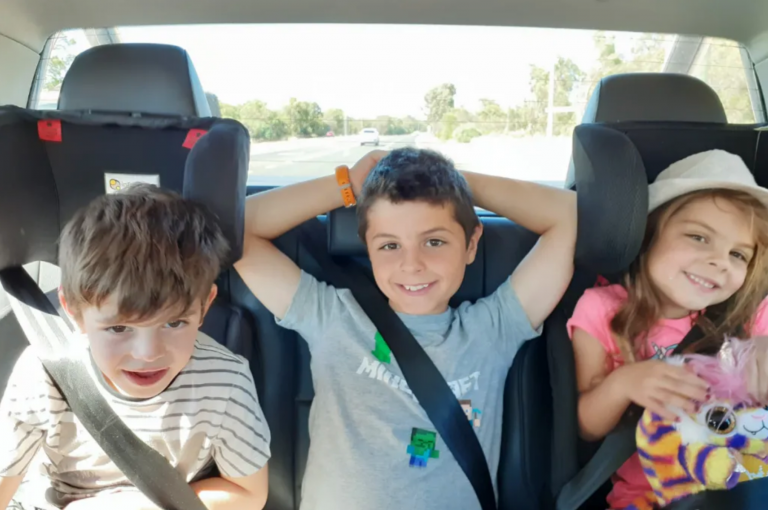We recently wrapped up a webinar series with four leading organizations and Circle In partners. And while Gap Inc, REA Group, Xero, and Lendi Group are different in age, industry, and size, they all have this in common: supporting their working caregivers in meaningful ways is a number one priority.
For them, it’s about embedding holistic programs, benefits, and resources that address the diverse needs of their workforce at every life stage.
In this post, you’ll find out how and why these four leading organizations invest in their working caregivers and show that supporting employees is about more than just good policy.
“Policies can’t just sit in isolation, it’s speaking through initiatives and day-to-day experience.” – Annaliese van Riet, General Manager, Experience and Culture, Lendi Group
1. Supporting your caregivers makes good business sense
Now more than ever, holistic aspects of the employee experience have come into sharp focus. With new workplace norms and a fierce war on talent, offering employees meaningful support is now seen as a must-have. And it can’t simply be an HR tick box exercise. Support has to be anchored in values and engrained within the company culture across every touchpoint.
But in order to create a holistic and inclusive ecosystem, you need to have enablers around your policies. From employee resource groups to dedicated caregiver slack channels and child care services to platforms like Circle In – offering employees customized support not only fosters a caring workplace culture but has a positive impact on your bottom line:
- Increased loyalty
- Increased engagement and productivity
- Improved attraction and retention
- Improved health and wellbeing
- Bolstered public image.
“When employees feel supported, they are more likely to be engaged and invested in their work.” – Stacey Newsom, Senior Manager, Talent Acquisition, Gap Inc
2. Support has to come from the top
When it comes to cultivating a holistic culture that empowers and supports employees to thrive, it all starts with leaders. It’s about finding the energy, identifying the champions, and having executive sponsorship to help model the change.
For Kasey Zun, Global Head of Inclusion, Diversity, and Belonging at Xero, executive buy-in is “very much pushing an open door,” but that’s not always the case. Where there isn’t executive appetite, it’s important to show the value — real and perceived — of the programs and resources that are being proposed or used. One way to do this is to leverage your people’s data. What does your engagement survey tell you about the benefits of your programs? How does it link back to your company goals? What’s the return on investment?
“Whether it’s your chief people officer, somebody who looks after HR, your CEO, or somebody from the executive team saying we support this. That’s a really strong message to everyone else in the organization.” – Kasey Zun, Global Head of Inclusion, Diversity and Belonging, Xero
3. You need to listen to your people
It’s no secret that the majority of employees in today’s workforce feel disengaged at work, in fact, a Circle In survey of over 450 caregivers showed that less than 50% feel a sense of belonging at work. While there is a multitude of reasons why people feel like this, one is that they simply don’t feel heard.
One way to combat this is to take an audience-led approach, where you solicit feedback and engage people in the decisions and changes that will impact them. In other words, let your employees help shape their own experiences. This includes leveraging their insights via focus groups or 1:1s, so they can be part of what your caring culture looks like and, just as importantly, adjusting how you deliver support to meet their evolving needs.
“Caregiving comes in all different forms and constructs and we’re not just talking about parents of babies and young children, we’re talking about teenage children or beyond. People who may be caring for friends or neighbors, even their parents. And everyone’s experience is unique even within that.” – Annaliese van Riet, General Manager, Experience and Culture, Lendi Group
4. It’s all about new ways of working
As we emerge from the last few years, it is abundantly clear that the major changes to how and when we work are here to stay. And it’s on organizations to keep up with this shift. With 9 out of 10 employees saying family is more important than work and 1 in 3 saying they are thinking of leaving their employer, you need to create flexible work arrangements so your working caregivers can strike the work/life balance that meets their needs.
What’s more, according to the Workplace Gender Equality Agency, “flexibility in employee work time, patterns and locations is beneficial for both employers and employees and can improve gender equality in the workplace and the home.” Where practicable, hybrid or remote working arrangements are known to:
- Improve organization productivity
- Enhance the ability to attract and retain employees
- Improve employee wellbeing
- Increase the proportion of women in leadership
- Future-proof the workplace.
“It’s about being empowered to do what you need with little explanation. And that looks different for everybody, so flexibility is key.” – Bree Dickson, Senior HR Business Partner, REA Group
5. There’s no point if you don’t measure your impact
Like any workplace initiative, you need to collect and analyze data if you want to gain tangible insights and measure the success of your support programs and resources. What this looks like will vary from organization to organization, but opening up a dialogue around the types of support you provide, not only allows you to take a pulse check but also to make changes to your roadmap so you can provide the right support at the right time.
Here are a few ways to measure impact:
- Annual engagement surveys
- Regular pulse surveys
- Statistics of parents and caregivers i.e. returning from parental leave, performance, career advancement
- Anecdotal feedback
- Data on adoption and utilization rates.
“To measure the effectiveness and satisfaction of these benefits, evaluation surveys are sent out to the company to capture what’s working and what isn’t and provide an opportunity for feedback.” – Stacey Newsom, Senior Manager, Talent Acquisition, Gap
Circle In has developed a comprehensive family benefits package to help you reflect on your current offerings and policies and build a more holistic support experience for your workplace. You can download it here.
You can view any of the on-demand webinars in full here.
If you’d like to learn more about how you can support your employees, click here to talk to us today.


